Nursery specifications for natives
Miles Giller, New Zealand Tree Grower May 2009.
Many landowners wish to promote the regeneration of native plants, for a whole variety of reasons. In an ideal world such regeneration would take place by natural processes. However there are many instances where some sort of help is required if the desired plants are to become successfully established.
This assistance can range from low-input systems, such as the control of herbivores and competitive weeds with nature providing the regeneration, through to high- input systems such as revegetation by planting nursery grown stock. Clearly, low-input management will usually be far cheaper, and provided the appropriate species occur within or near the site, will usually be more likely to bring about an ecologically representative outcome.There are numerous cases where desired species may not be able to regenerate in a site, especially in highly modified environments where formerly dominant species may now be absent. In some cases such re- establishment can be achieved most simply by introducing the appropriate seeds. However in many cases the planting and establishment of nursery grown stock may be necessary.
Learning from others
The forestry industry has been establishing nursery grown plants in rugged rural New Zealand environments for over a century. Commercial requirements have brought about huge improvements in establishment success during this time, especially over the last 30 years. Barring some catastrophic event, it is now considered quite realistic to expect a 95% or higher success rate, even in relatively hostile environments.
Establishment success can be measured by the number of plants that have survived their first year in the field, are healthy, and have good prospects of continuing to grow with little or no further intervention. Such success in the forestry sector is based on the implementation of sound establishment principles involving a number of factors, from site preparation right through to after-care. Good stock quality is now accepted as a fundamental factor, and specifications have been developed to provide thresholds of several critical stock quality determinants.
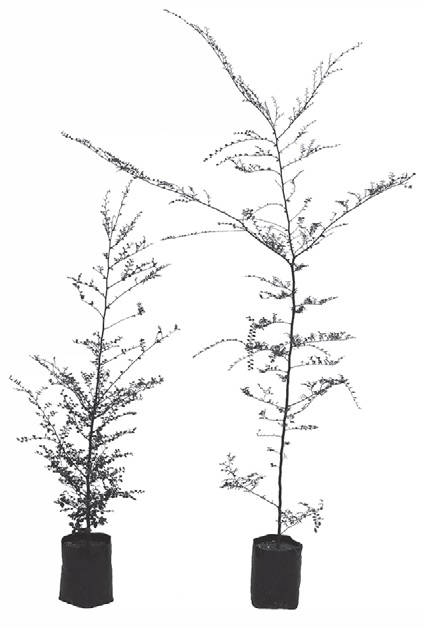
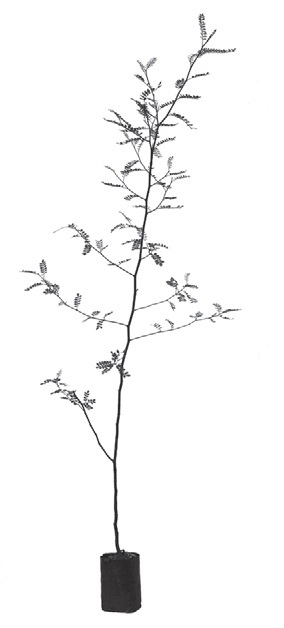
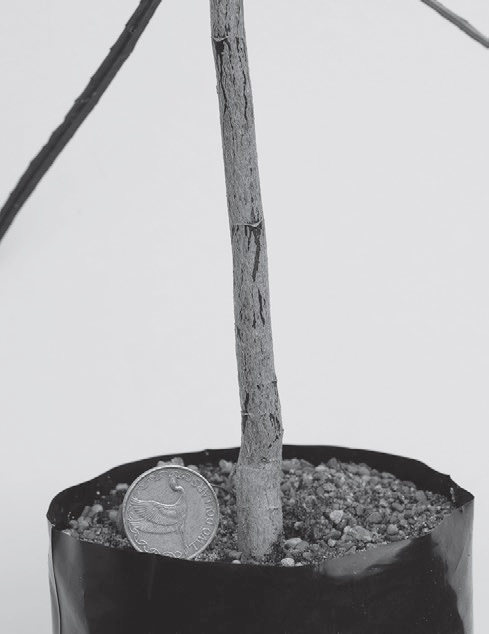
However the expectations of establishment success when planting natives appear to vary greatly, with some practitioners openly aspiring to success rates of less than 50%. Such a low survival rate can be costly, wasteful and hardly engenders a sense of enthusiasm.Achieving such poor success may be attributable to several factors, but often the quality of planting stock is a contributing limitation.
The main seedling specifications
The key measurements included in forestry plant specifications relate to the root-to-shoot ratio, the height or age of a plant, the stockiness of a plant, and the degree to which a plant has been hardened-off. Native plants do not always have the same growth characteristics as the exotic conifers of the forestry industry. However the same specification principles, with minor adaptations for each species, can usually be applied to natives.
Planting sites vary considerably throughout New Zealand, from the ‘winterless’ far north to more hostile high country and southern sites.The main constraints to successful establishment vary accordingly, and consequently different sites may require differing specifications.As one farm forestry practitioner once said ‘If it works for you, stick with it’. A survival rate much below 95% need not, however, be accepted as working.
Here in Canterbury, the main site limitations tend to be the amount of available moisture – deficit leading to droughting especially in the first spring and summer – the severity, timing and duration of winter cold – leading to frost damage and winter desiccation, and the effects of animal browsing.These effects cannot necessarily be managed, by inputs into the control of pests and weeds are usually accepted as a must.The use of plant shelters can provide a protective microclimate for vulnerable stock, though this can become expensive on the broad scale.
Stock size
Some practitioners advocate the planting of large numbers of relatively cheap small-grade plants, with an expectation that an acceptable proportion will survive.This can work tolerably for fast-growing or resilient species, especially in more benign sites, and where competition with other plants, particularly exotic grasses, can be managed. It does however carry a high level of risk in hostile sites, as small plants tend to be vulnerable and may remain so for several seasons. Similarly, small plants generally need more after-care, especially release spraying, which can add considerably to the eventual cost per unit. Such aftercare can itself contribute to losses. We all know of examples of small plants hidden among weeds being accidentally sprayed.
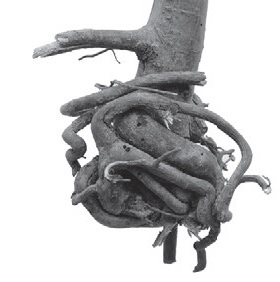
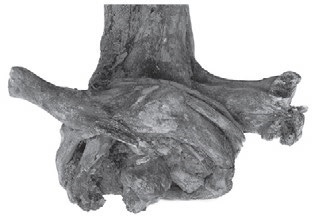
Other practitioners advise the planting of a lesser number of sturdier plants, often with greater emphasis on managing other establishment factors, especially site preparation, weed control and animal control, along with modern forestry practice. Larger grade plants are generally more resilient and will be vulnerable for a shorter period of time, so risk tends to be reduced.
Just which system will be the most cost-effective varies from site to site, on the species planted, and on the degree of site preparation and after-care available. Choice tends to be based largely on local experience, as there have been few formal trials relating to native stock quality for differing regions.
Canterbury experience
Experience of planting into exposed sites here in Canterbury tends to favour the planting of hardened-off well developed plants with a solid root collar diameter − the measure of a plant’s reserves and resilience − and a sizeable root mass. Smaller grade stock may be appropriate in better protected sites such as under an existing nurse or in highly managed sites where pest and weed control can be guaranteed. Obtaining plants of adequate specifications from suppliers
is not always easy, as few nurseries provide detailed specifications. As such, it may be up to the buyer to provide the specifications when ordering stock.
Matawai Park specifications
Early plantings at Rangiora’s Matawai Park quickly became based around forestry style expectations for stock quality as well as for other factors such as site preparation and weed control. Recent enrichment plantings had very varied success until plants were ordered subject to clearly prescribed specifications. By planting stock of the specifications shown on the following page, establishment success generally rose from around 50% to over 95%.
Matawai Park planting programme Species and size specifications/order sheet
| Species required | Number required | Number available | Minimum container size required | Container size available | Minimum height required (mm) | Height available (mm) | Minimum RCD required (mm) | Root Collar Diameter available | Provenance available | Dollars per unit |
|---|---|---|---|---|---|---|---|---|---|---|
| Coprosma crassifolia Coprosma | 10 | PB2 | 400 | 8 | ||||||
| Aristotelia serrata Wineberry | 5 | RX90 | 250 | 4 | ||||||
| Clematis paniculata Clematis | 3 | PB2 | 500 | 4 | ||||||
| Corokia cotoneaster Corokia | 3 | PB2 | 300 | 7 | ||||||
| Dacrycarpus dacrydiodes Kahikatea | 5 | PB3 | 900 | 10 | ||||||
| Elaeocarpus hookerianus Pokaka | 10 | PB2 | 400 | 8 | ||||||
| Griselinia littoralis Broadleaf | 15 | PB2 | 400 | 8 | ||||||
| Helichrysum lanceolatum Niniao | 20 | PB2 | 300 | N/A | ||||||
| Nothofagus solandri Black beech | 10 | PB3 | 800 | 8 | ||||||
| Poa cita Silver tussock | 10 | RX90 | 200 | N/A |
Each species is assigned a minimum container size determining the root mass, height and root collar diameter − the diameter of the main stem at ground level. Some species are naturally stocky, others less so, therefore height and root collar diameter specifications will vary between species.
Some specification criteria do not fit the growth habit of all native plants. For instance one cannot easily apply root collar diameter to tussocks, sedges, flaxes, young cabbage trees, or to multi-stemmed species, therefore these criteria may not always be applicable. Some containers provide a more plunging root system than others, which could be specified to suit species which might benefit.
Would-be suppliers are provided additional notes explaining the rationale for the specifications, and providing a few general requirements. Plants are to be hardened-off, well established in containers but not root-bound or compacted, should be free of contorted roots, genetically varied and preferably sourced from a variety of parent plants, and should be free from pests and diseases. Because the flora of Matawai Park is intended to represent the vegetation of Canterbury, the preferred provenance of each species is defined, though this may not be applicable to planting projects with different purposes. In some cases it has been necessary to have plants contract-grown in order to obtain plants of the desired specifications.
The specifications set for Matawai Park may not suit those required for other sites, so only a few examples are shown here and purchasers would need to determine specifications for each species relative to their sites. Similarly, the specifications required within any site may vary. For instance the fast-growing wineberry might afford to be small grade if planted into a well sheltered niche, but may need to be more robust if planted out in a relatively exposed position. Above is an example of a simple plant order and specification template.
The degree of success of any plant establishment operation will eventually depend on a number of factors, and all of these must be adequately addressed. Plants of even the best specifications are unlikely to prosper if planting coincides with a convention of hares. However if establishment success falls much below 95%, then practitioners probably need to look carefully at the contributing factors. Obtaining stock of good quality by the use of plant specifications may provide the means to help overcome one critical problem.
The opportunity also exists for regionally-based research on stock quality, either formal or even at the home farm level, to provide landowners and nurseries with readily accessible local standards for local species.
Miles Giller is the QEII NationalTrust regional representative for North Canterbury & Kaikoura, and a member of the Matawai Park Advisory Group.

 Farm Forestry New Zealand
Farm Forestry New Zealand